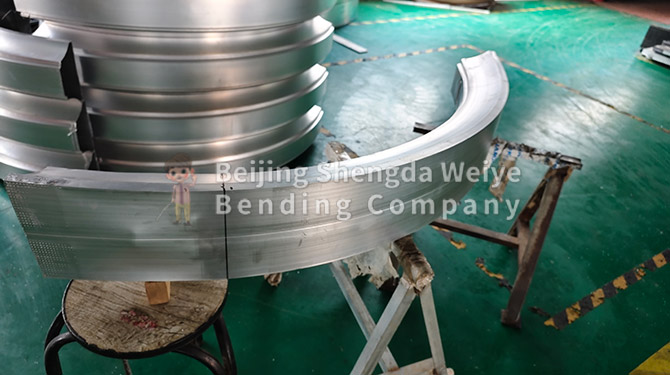Material Selection and Performance Analysis of Special Profile Bending
Special profile bending is a crucial manufacturing process used across various industries, including construction, automotive, aerospace, and furniture. The ability to bend materials into complex shapes allows for innovative designs and efficient use of space and materials. However, the performance of bent profiles heavily depends on the selection of appropriate materials. This article explores the factors influencing material selection for special profile bending and analyzes the performance characteristics of various materials used in this process.
1. Understanding Special Profiles
Special profiles refer to customized shapes of materials that are often required for specific applications. These profiles can include beams, channels, tubes, and other geometrically complex forms that may not be readily available in standard stock sizes. The bending of these profiles must be done with precision to ensure structural integrity and aesthetic appeal.
2. Factors Influencing Material Selection
When selecting materials for special profile bending, several factors must be considered:
-Mechanical Properties
The mechanical properties of materials, such as yield strength, tensile strength, ductility, and hardness, play a crucial role in determining their suitability for bending. Materials with higher ductility are preferred, as they can withstand deformation without cracking.
-Bending Radius
The minimum bending radius is a vital consideration, as it dictates how tightly a material can be bent without causing failure. Each material has a specific bending radius that should be adhered to, based on its mechanical properties.
-Weight and Density
For applications where weight is critical, such as in the aerospace industry, the density of the material must be taken into account. Lightweight materials that can still offer the necessary strength are often favored.
-Corrosion Resistance
In environments where materials are exposed to moisture or chemicals, corrosion resistance becomes a significant factor. Materials like stainless steel and aluminum are commonly selected for their ability to resist corrosion.
-Cost and Availability
The cost of materials and their availability also influence material selection. While high-performance materials may offer superior properties, they can also be significantly more expensive and harder to obtain.

3. Common Materials Used in Special Profile Bending
-Steel
Steel is one of the most widely used materials in special profile bending due to its excellent mechanical properties. It offers high strength and durability, making it suitable for a wide range of applications. Different grades of steel, such as carbon steel and alloy steel, can be selected based on specific performance needs.
-Aluminum
Aluminum is favored for its lightweight and corrosion-resistant properties. It can be easily bent into complex shapes, making it ideal for applications in the automotive and aerospace industries. Its lower density compared to steel allows for weight savings, which is crucial in these sectors.
-Stainless Steel
Stainless steel combines strength with excellent corrosion resistance, making it suitable for harsh environments. It is commonly used in architectural applications and food processing equipment. The ability to maintain aesthetic appeal while providing functional performance makes stainless steel a popular choice.
-Copper and Brass
Copper and brass are not as commonly used as steel or aluminum but find applications in specific industries, such as electrical and plumbing. Their excellent conductivity and machinability make them suitable for specialized bending applications.
-Polymer Materials
In some cases, advanced polymer materials are used for bending due to their lightweight and corrosion-resistant properties. These materials are particularly useful in applications where traditional metals may not be ideal.
4. Performance Analysis of Bent Profiles
Once materials are selected and profiles are bent, it is essential to analyze their performance. Key performance metrics include:
-Structural Integrity
The structural integrity of bent profiles can be assessed through stress analysis and fatigue testing. Understanding how the material behaves under load is crucial for ensuring safety and longevity.
-Aesthetic Quality
The visual appearance of bent profiles is often as important as their structural performance. Surface finish, uniformity, and the absence of defects are critical factors in evaluating the quality of the final product.
-Dimensional Accuracy
Precision in bending is vital for ensuring that the final product meets design specifications. Dimensional accuracy can be measured using various techniques, including laser scanning and calipers.
5. Conclusion
The selection of materials for special profile bending is a complex process that requires careful consideration of mechanical properties, environmental conditions, and cost factors. By understanding the performance characteristics of different materials, manufacturers can make informed decisions that enhance product quality and functionality. Continued advancements in materials science and bending technologies will further expand the possibilities for special profile applications in the future.
In conclusion, a strategic approach to material selection and performance analysis is essential for the successful implementation of special profile bending in various industries.
09
2025-10
Number of visitors:1
HOT NEWS
-
Advanced CNC Tube Bending Technology: Achieving Consistent and Reliable Precision in Complex Shapes
2025-11-17
-
From Design to Execution: How Profile Bending Transforms Architectural and Industrial Projects
2025-11-10
-
Innovations in Door and Window Bending Processing: Key Techniques for Enhancing Product Quality
2025-11-01
-
A Guide to Equipment Selection and Maintenance for Precision Bending and Drawing Processes
2025-10-24




 English
English Chinese
Chinese Japan
Japan German
German

 LIST
LIST
